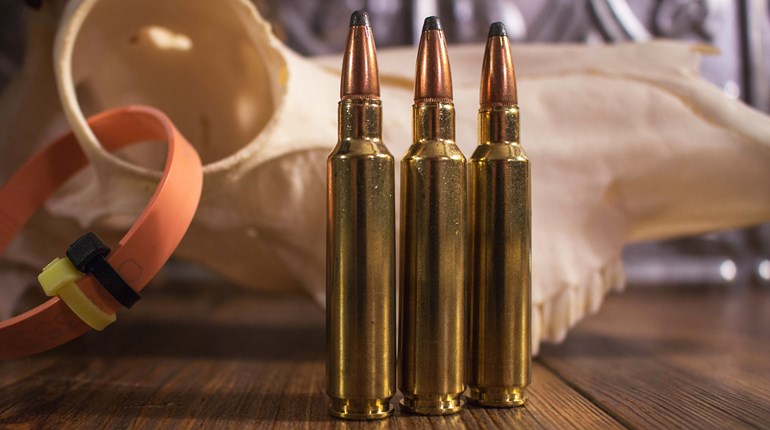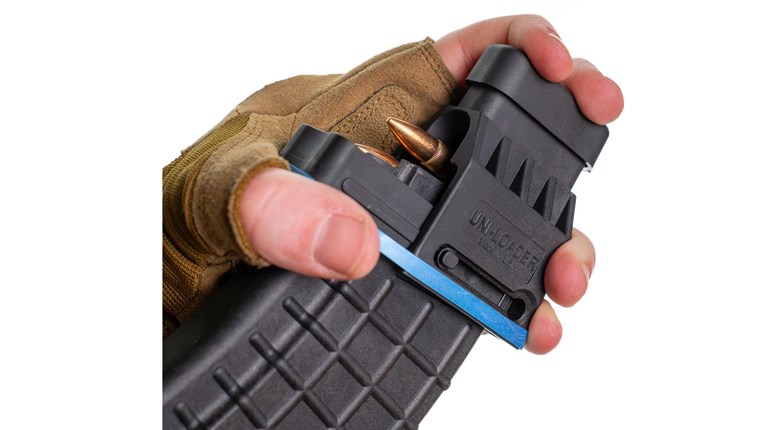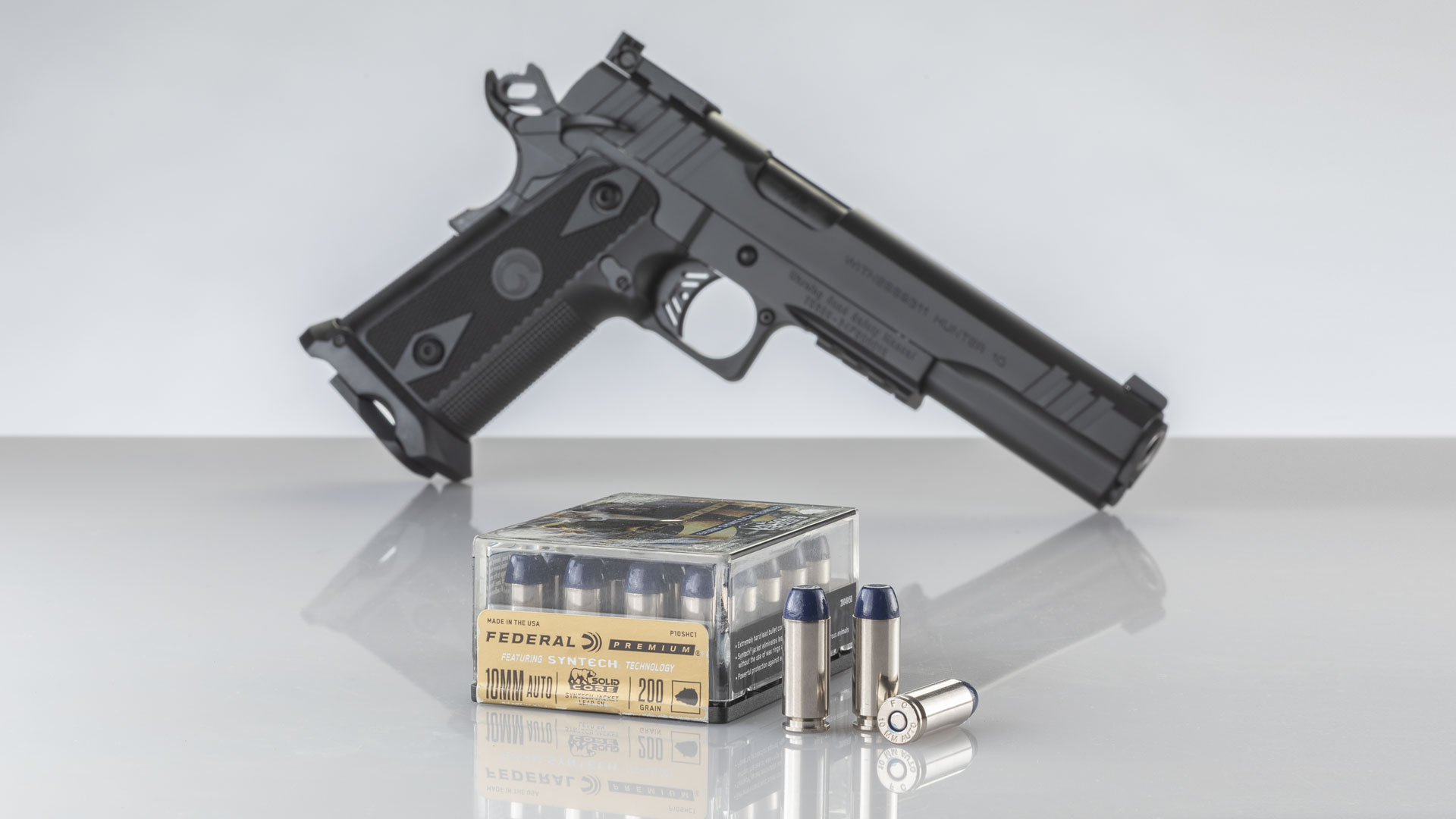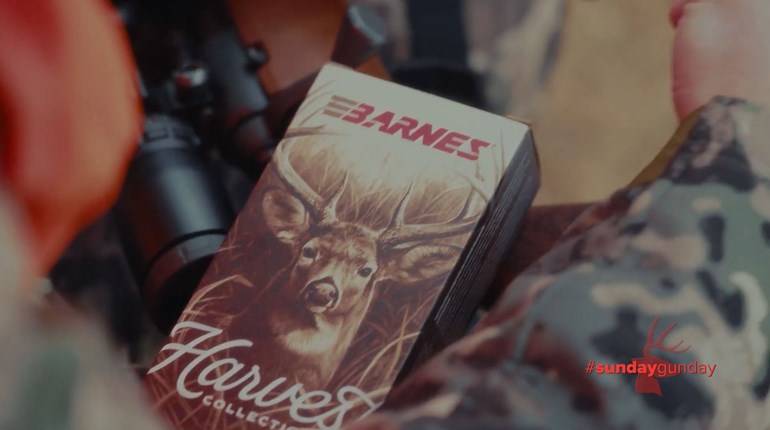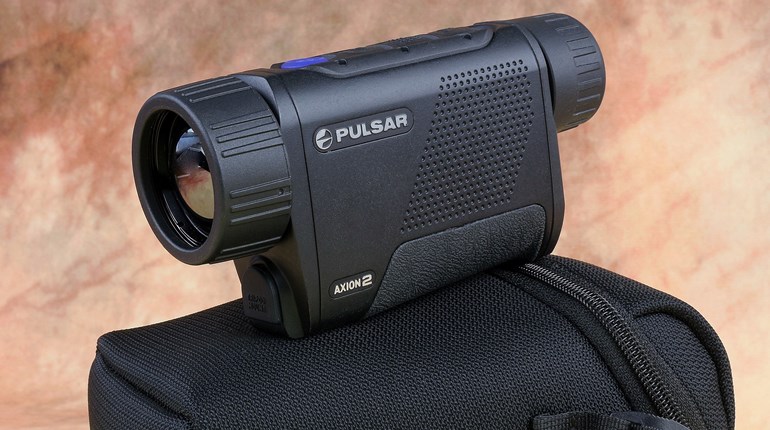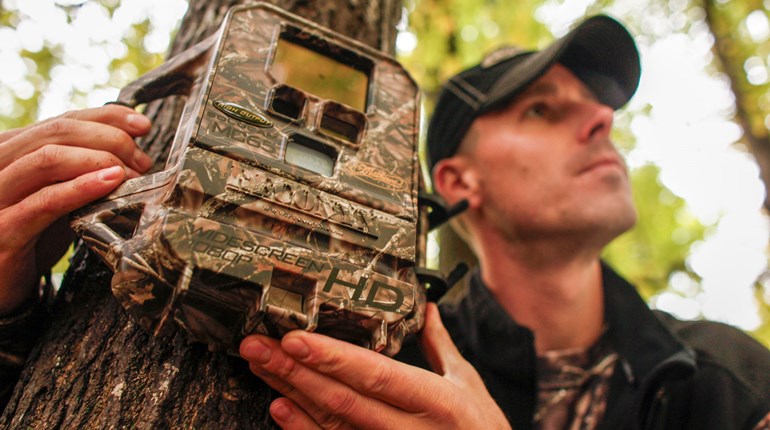
If you were to ask me what I thought were the two most popular cartridges for use on an African dangerous game, I’d have to say it would be the .375 Holland & Holland Magnum and the .416 Rigby. I get a good number of phone calls and emails each month from a hunter looking to buy their first dangerous-game rifle, and these two cartridges are usually the top two contenders, if not in the mix of other cartridges.

Undoubtedly, both of these cartridges have a romance attached to them, as they’ve appeared in numerous influential books and articles about pursuing dangerous game on the Dark Continent. And both are certainly effective, being chosen by professional hunters and travelling sportsmen alike. Each is capable of taking the entire spectrum of game animals, in any climate, on any continent. But which is the better choice for the hunter?

The .375 H&H Belted Magnum is the second belted cartridge from Holland & Holland, and the second to use the .3750inch bore diameter; the .375 Velopex came out in 1905, but was a bit weak for universal applications. In 1912, Holland & Holland introduced the .375 H&H Magnum we all know and love—replete with its slight 15-degree shoulder, belt for headspacing, 2.85-inch case length and the 3.600-inch cartridge length—would work perfectly in the magnum Mauser action. The base diameter of 0.532-inch is wider than any of the Mauser cartridges, requiring a unique bolt face. Three bullet weights were offered initially, including a 235-grain load at 2,800 fps, a 270-grain load at 2650 fps, and a 300-grain load at 2,500 fps. All three were fueled by Cordite—the propellant of the day—and the long, sloping case was designed to extract easily, even in the heat of the Tropics. The 300-grain load was always the most popular, giving over 4,100 ft.-lbs. of energy at the muzzle to deal with dangerous game at close distances, yet still shot flat enough for work in the plains of Africa or the mountains of India. It remains the most popular bullet choice, though there are many lighter choices which can be a bit easier on the shoulder and yet handle the more common game species.
One of the most appreciable features of the three-seven-five is that in spite of its striking power, its recoil is surprisingly manageable. I have found the .338 Winchester Magnum to possess a faster, and often nastier, recoil, while the .375 H&H is often more of the classic ‘push’ rather than ‘slap’; my wife has adopted the .375 H&H as one of her pet rounds, and shoots even the 300-grian slugs well. It has been one of the most prolific safari cartridges for my lifetime, and due to the fact that both Winchester and Remington chambered for it since the 1930s, it remained a viable choice for travelling hunters when all the other safari ammunition was drying up quickly.

Released one year prior to the .375 H&H, John Rigby & Co.’s .416 Rigby was designed as a big-game (read dangerous-game) cartridge, with the typical over-sized case which works best with the temperature-sensitive Cordite. The sheer volume of the .416 Rigby kept the pressures low, even in the heat of equatorial Africa, and made sure the hunter didn’t rip a rim off while an animal was charging to settle the score. The .416 Rigby is a rimless cartridge, using the steep 45-degree shoulder (I can’t think of a cartridge with a steeper shoulder) for headspacing; that shoulder is carried over from the older .350 Rigby Magnum, though the .416 has a different body length and diameter. With a case measuring 2.900 inches, and an overall length of 3.750 inches, the .416 Rigby works best in a magnum-length action, though some of the early ones were stuffed in a standard Mauser action by removing significant amounts of metal.

Like the .375 H&H, the bullet diameter of the .416 Rigby is nominal (British nomenclature can be very confusing), and the original loading featured a 410-grain bullet at 2300 fps, for 4,700 ft.-lbs. of muzzle energy. I have seen the results of modern testing of vintage .416 Rigby ammunition (using a chronograph as opposed to the ballistic pendulum used in 1911), and velocities were averaging around 2150 fps. Nonetheless, the reputation of the .416 Rigby was stellar, in spite of less than 170 rifles being produced prior to the breakout of WWII. In the hands of Harry Selby, the .416 Rigby was brought back to the forefront in 1953 when Robert Ruark waxed poetically in his Horn of the Hunter (if you haven’t read that, and love safari, put this article down right now and go buy that book).
I have found the .416 Rigby (and its ballistic twins the .416 Remington Magnum and .416 Ruger) to be wonderfully accurate, and fully capable of hunting any animal, as well as capable of stopping a charge. Modern loads use a 400-grain bullet at 2400 fps, for 5,100 ft.-lbs. of energy, and that formula makes a fully capable stopping rifle. Recoil is assuredly more than that of the .375 H&H Magnum, but it isn’t hellacious. And those who have chosen the .416 Rigby don’t seem to have regretted the choice in any way.

In all honesty, though the two cartridges are extremely popular choices, they are actually in two different classes in my opinion. In fact, I could even make the case for owning both, as they can actually be quite complimentary. The .375 H&H Magnum has a much wider range of bullet choices, and when loaded with the 235- and 250-grain bullets, isn’t totally out of place when hunting deer and black bear. It can be a very effective choice for all African plains game—I have used it for species ranging from steenbok up close, to eland at 400 yards—and yet with the 300- and 350-grain bullets (the latter loaded in the Norma African PH line) has the penetrative qualities needed for the pachyderms and large beasts. I feel the .375 H&H is perfectly at home in Alaska, and while some folks may see the cartridge as a little light for Cape buffalo and elephant, it has accounted for a whole bunch of both. Harry Manners and Wally Johnson were a pair of professional hunters who relied exclusively on the .375 to take all sorts of game throughout their career. It shoots flat, it hits hard, and in my opinion does it all very well.
The .416 Rigby is a more specialized cartridge, designed for situations where the muzzle is pointed at something which can kill you. As a result, it doesn’t shoot quite as flat as the .375 does, it has a different recoil level, generally comes in a heavier rifle, and doesn’t possess the flexibility of the .375 H&H Magnum. But, it does stop big beasts better than the .375 H&H, and with the 450-grain Woodleigh bullets in that Norma African PH line, leans more toward the .458s. Inevitably, even with the light-for-caliber choices available in .416—there are good 325- and 350-grain component bullets available—the .416 Rigby doesn’t have the universal applications that the .375 H&H Magnum does.

So, I’m going to give the advice here that I give each time this decision is presented to me: If you want the most universal choice, go with the .375 H&H Magnum, and work diligently with it to take full advantage of the wide bullet range. You can reach for that rifle much more often than any of the .40s or .45s, yet with a premium 300- or 350-grain bullet, confidently pursue Africa’s heavyweights. If, on the other hand, you envision multiple safaris for hippo, Cape buffalo and elephant, and want a specialized rig for those species in a bolt action repeater, the .416 Rigby and its heavier bullets (with high sectional density values) will penetrate a Cape buffalo from stem to stern, and will stop a charge better than any lesser cartridge. Both cartridges have a great selection of factory loads, along with great choices of both softpoint and solid projectiles. While I absolutely love my .404 Jeffery, there is no question that the .416 Rigby has many more factory ammunition choices, and the .375 H&H has more yet.
I still stand by my statement that the .375 H&H Magnum remains the most useful cartridge ever invented, though on both ends of the species spectrum, you might find better tools for the job at hand. However, no other cartridge does it all as well as the .375 Holland & Holland Belted Magnum.
Looking for previous installments of our "Head to Head" series? Click here.












